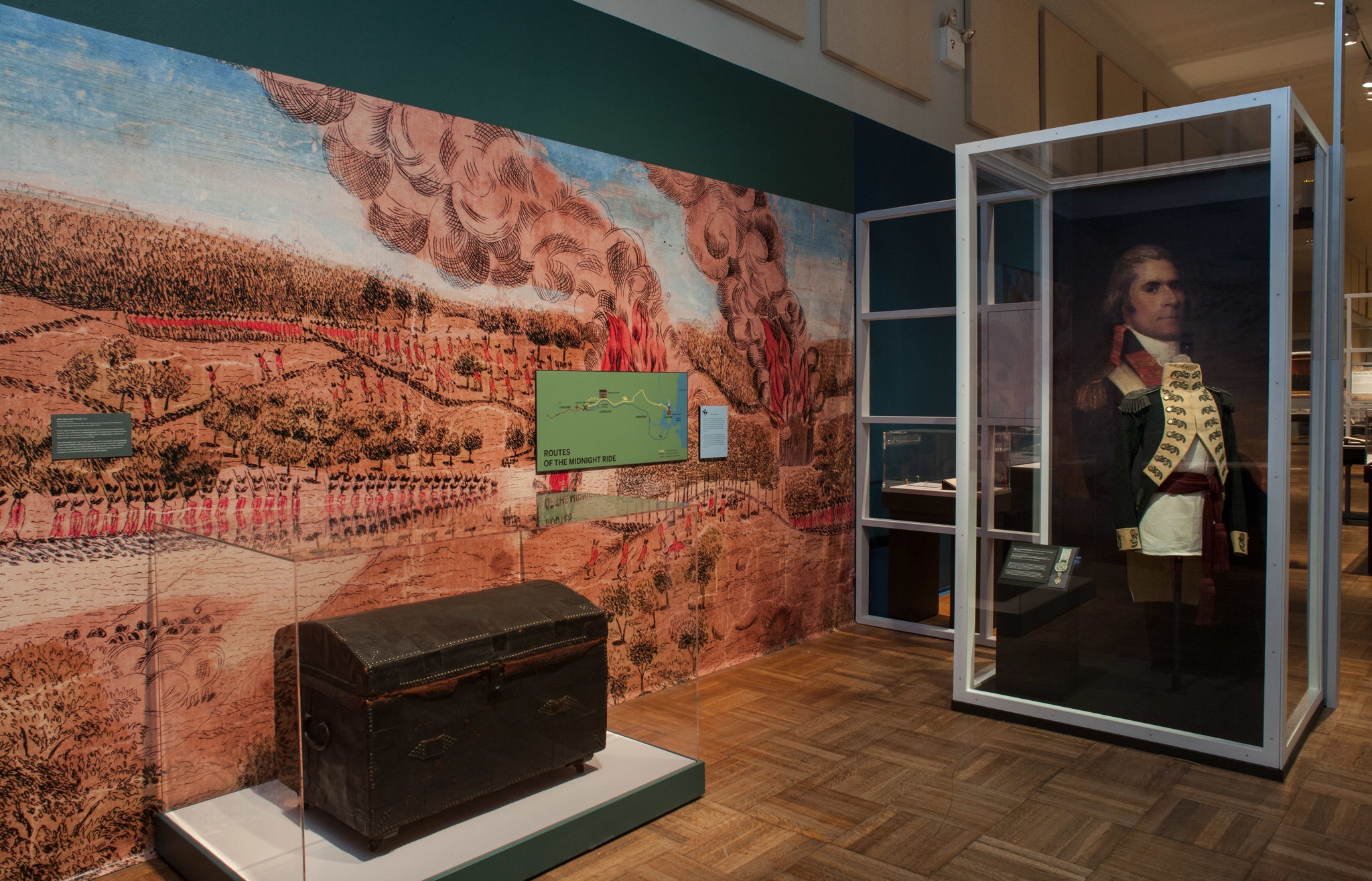A review in the New York Times elaborates on the life of Paul Revere, whose accomplishments as a silversmith, printmaker, and copper manufacturer—among other things—are celebrated in an exhibition at the New-York Historical Society. Organized by the American Antiquarian Society, “Beyond Midnight” illuminates details of the revolutionary’s famous ride while also presenting the story of Revere as entrepreneur.
Listen, my children, and you shall hear of more than the midnight ride of Paul Revere. A lot more.
You will hear that Revere was a maker as well as a messenger — a silversmith, a coppersmith and a brass and iron founder. But you will hear about more than teapots, tankards and thimbles.
You will find that he was a peerless networker, a headstrong propagandist, a trusted courier (to the patriots) and a stubborn insurgent (to the British). You will see that he was a sharp-eyed witness whose engravings documented early clashes with the British, including the Boston Massacre.
You will also hear that Revere (1735-1818) was a determined entrepreneur with customers on both sides of the American Revolution. (He made a 45-piece silver service for Boston loyalists a couple of months before the Boston Tea Party, which Revere helped plan.)
“The ride is one day of his life, one very long day in one very long life,” said Lauren B. Hewes, a curator of “Beyond Midnight: Paul Revere,” a new exhibition at the New-York Historical Society. “If you can only be known for one day, that’s not a bad day to be known for, but he did all these other things.”
The exhibition was organized by the American Antiquarian Society, of which Ms. Hewes is the curator of graphic arts. Nan Wolverton, the show’s other curator, is the director of fellowships at the antiquarian society, and of its Center for Historic American Visual Culture. The display includes more than 140 objects from the antiquarian society’s extensive Revere holdings; the New-York Historical Society’s own collection; the Museum of Fine Arts, Boston; and the Massachusetts Historical Society, among others.





